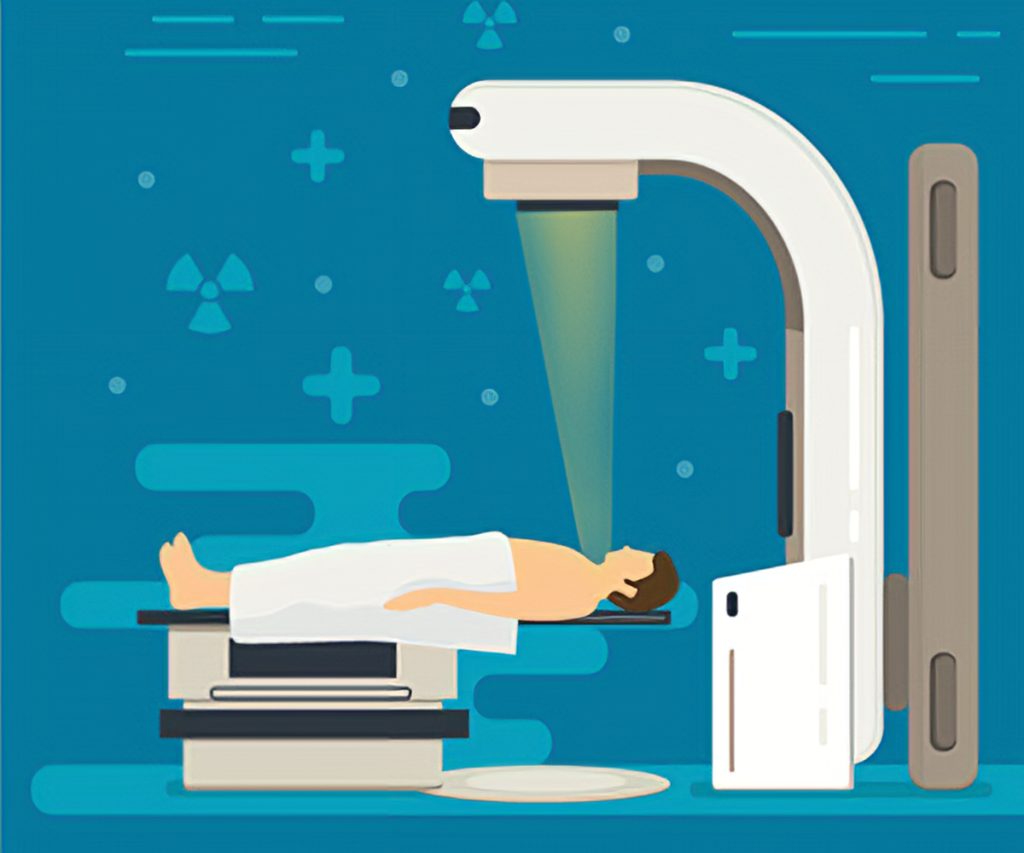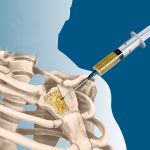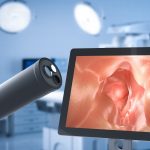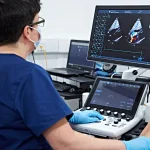
Radioactive scans can help your doctors diagnose some types of neuroendocrine tumours. You have an injection of a low dose radioactive substance, which can show up on a scan.
Radioactive scans include:
- octreotide scans (or Octreoscans) – these are also called somatostatin receptor scintigraphy scans
- tektroyd scans
- gallium dotatate PET (positron emission tomography) scans
You might also have an mIBG scan, but this is less common now. mIBG stands for metaiodobenzylguanidine.
What are radioactive scans and why do I need one?
Octreotide, dotatate and mIBG are substances that some neuroendocrine cells take up (absorb). Doctors can attach a radioactive substance to these which a special camera, called a gamma camera, can pick up. The radioactive substance is also called a radioactive tracer or radionuclide. An example of a radioactive substance is gallium.
The scans show up areas where radioactivity collects in the body. Because the neuroendocrine cells take up the radioactivity these scans can show where a neuroendocrine tumour is and if it has spread.
The amount of radiation is very small. You have the scan in the nuclear medicine department at the hospital.
You might have scans on 2 days. If you are having a tektroyd or gallium dotatate PET scan, you only need scans on one day.
Preparing for your scan
Check your appointment letter to see how to prepare for your scan. You may need to stop taking certain medicines beforehand.
If you are going to have an mIBG scan, you take some iodine medicine. This stops your thyroid gland from absorbing the radioactive tracer. You take it the day before the scan and the day of the scan. Your appointment letter gives more information about this.
The evening before your appointment, you might take a gentle laxative. This helps to clear your bowel, so the doctors can get clearer pictures. You can eat and drink as normal.
Contact the department as soon as you can before the scan if you are, or think you might be pregnant. Also, let them know if you are breastfeeding or are the main carer of a baby or young child.
Before your scan
When you arrive at the department, a specialist nurse or technologist gives you the radioactive tracer. They inject it through a small tube (cannula) in the back of your hand or in your arm.
It takes about 4 hours for the tracer to travel through your bloodstream and collect in areas of your body. You can usually leave the hospital during this time. You need to drink plenty and go to the toilet regularly. This is to get rid of any excess tracer, and helps to give clearer pictures.
Your technologist or nurse will give you a time to be back for the scan.
Having the scan
Your technologist will ask you to go to the toilet to empty your bladder before the scan.
You then lie on the scanning bed. There are special cameras above you and under you. They move along the length of your body taking pictures. You need to lie as still as possible during the scan. It takes about 30 minutes. This might be longer if you are having another type of scan, called a CT scan, at the same time. You might have one, so doctors can more clearly see where the NET is.
You are then able to go home. You go back to the hospital the next day for another scan if needed. This can last up to 3 hours. You have the chance to move around or go to the toilet during this time.
Sometimes you need to go back to the hospital for a third day to have more scans.
After your scan
You can go home after the scan. You need to drink plenty over the next few days. This is to help flush out the radioactive tracer from your body.
The radioactive tracer gives off small levels of radiation that goes away quickly. But for up to a few days after having the injection you should avoid long periods of close contact with pregnant women, babies and young children. Your nurse or technologist will give you more information about this.
If you’re travelling abroad a short time after your scan, it may be a good idea to take your appointment letter with you to show that you’ve had a scan. Most airports have sensitive radiation monitors that may pick up the trace of radiation from your test.
Possible risks
There is a small risk from the radiation. It can increase the risk of cancer in the future by a very small amount. It is a low dose of radiation and your doctor makes sure the benefits of having the test outweigh this small risk. Talk to your doctor or nurse if you are worried about this.
There is a risk of an allergic reaction to the radioactive injection. This is rare, and usually a mild reaction. Tell your nurse or technologist if you feel unwell at all after having the injection.
Getting your results
You should get your results within 1 or 2 weeks.
Waiting for results can make you anxious. Ask your doctor or nurse how long it will take to get them. Contact the doctor who arranged the test if you haven’t heard anything after a couple of weeks.
You might have contact details for a specialist nurse who you can contact for information if you need to. It may help to talk to a close friend or relative about how you feel. You may want them to go with you to get the results for support.
Other tests
Most people have several tests to diagnose a NET. You can find out what other tests you might have in your specific NET section.



